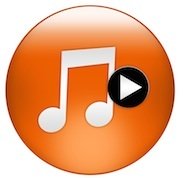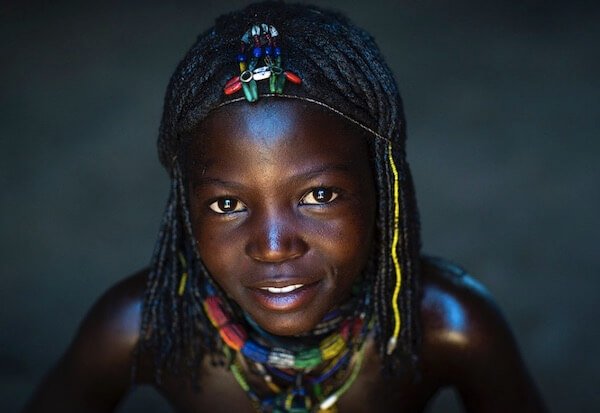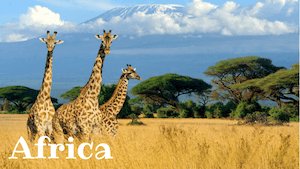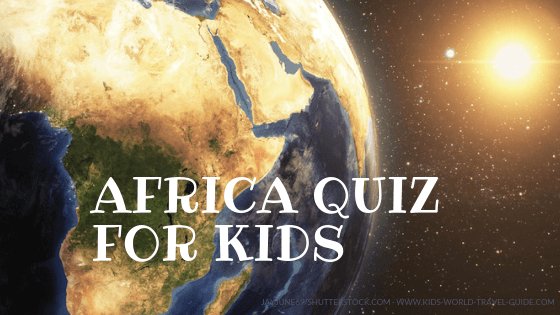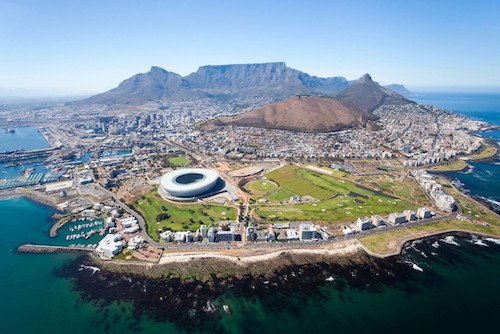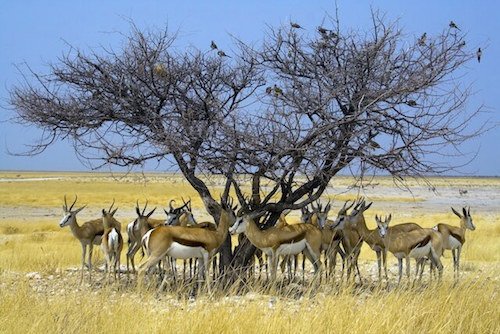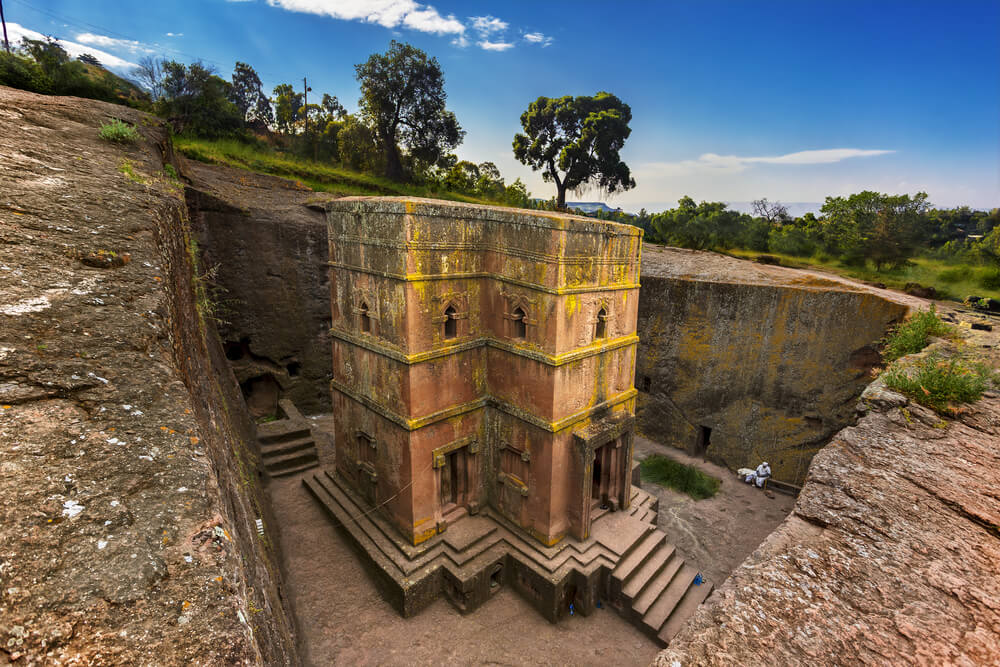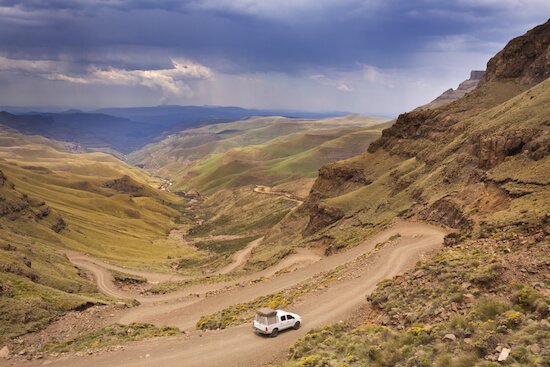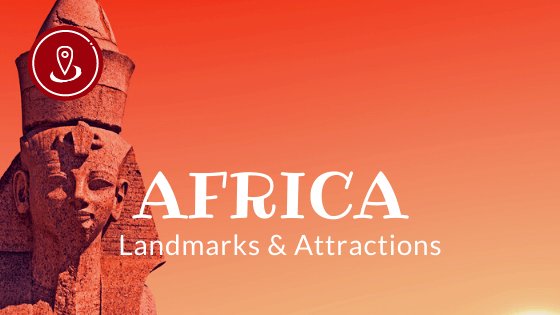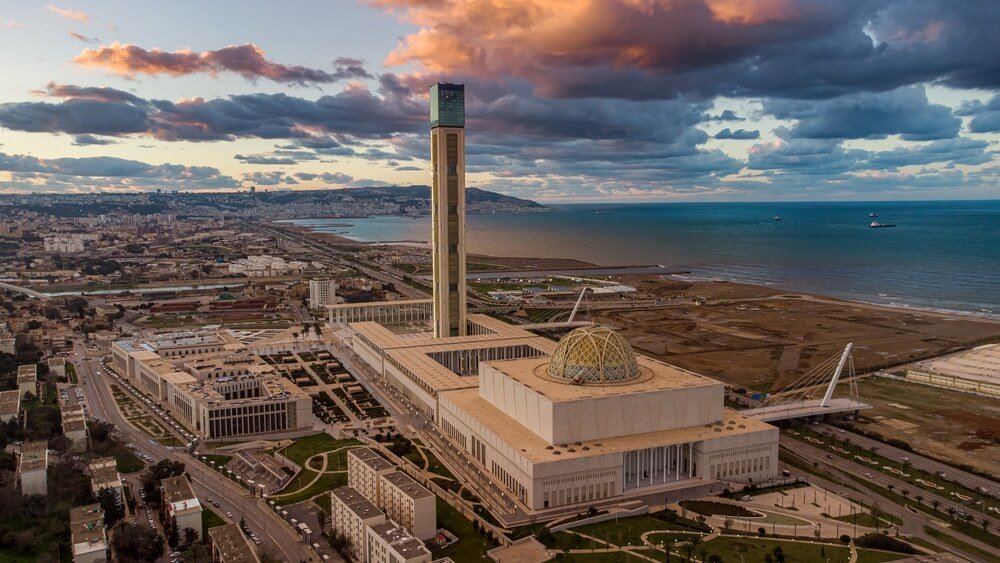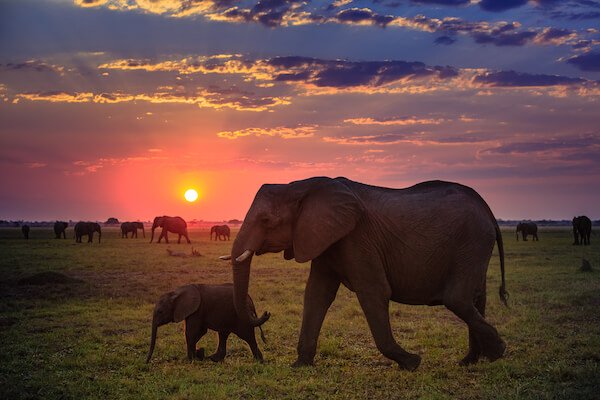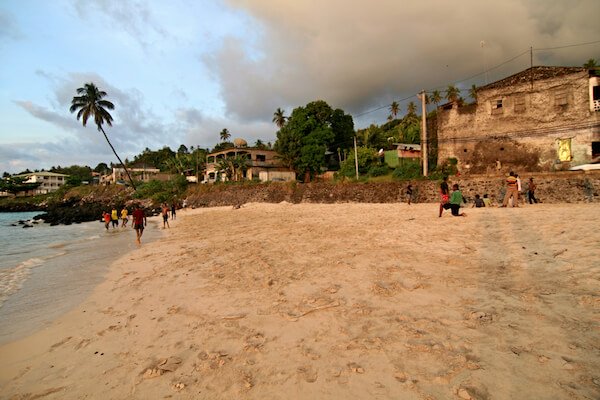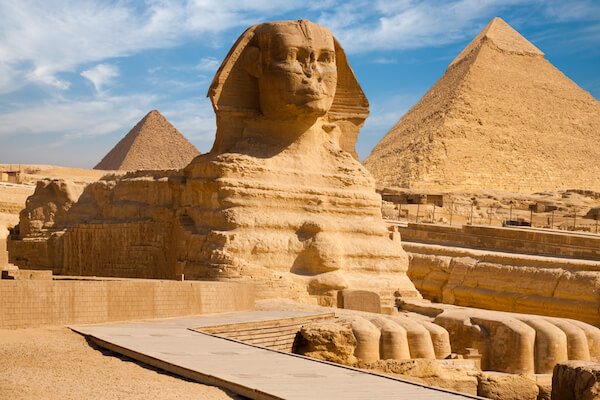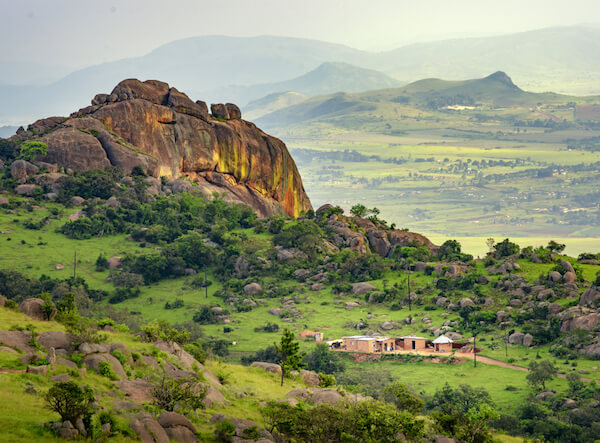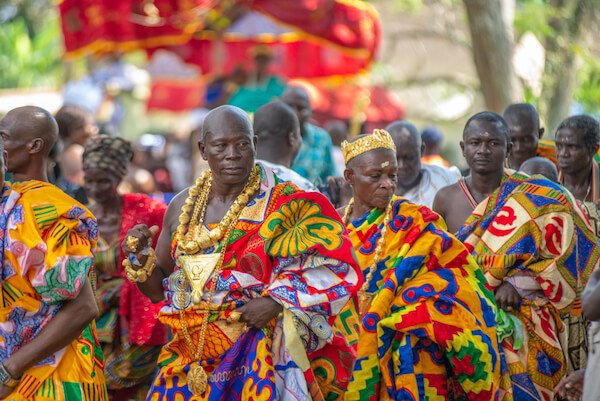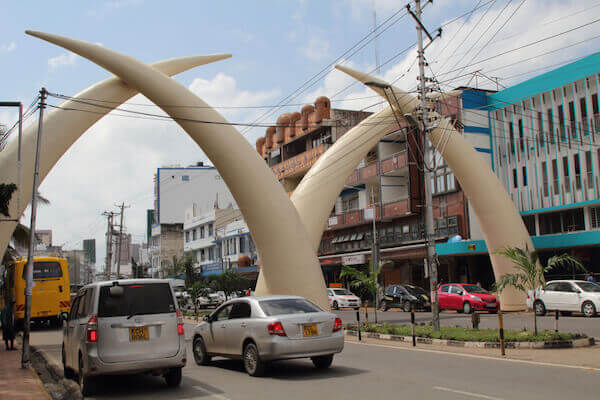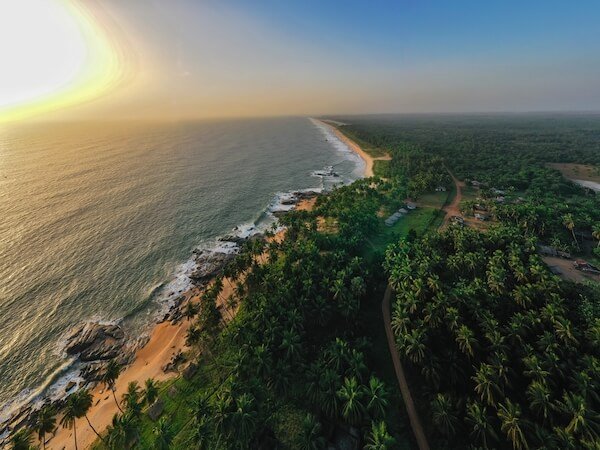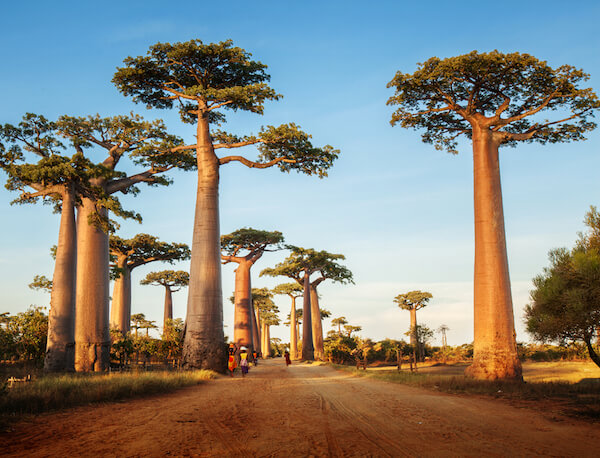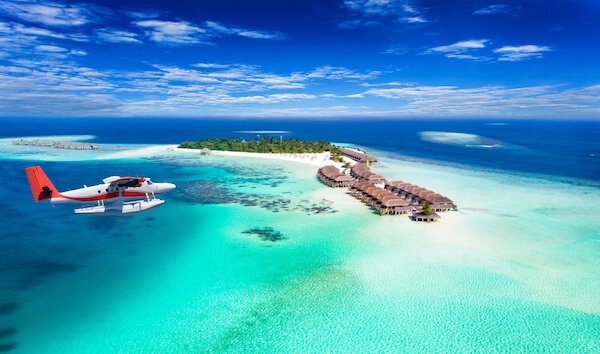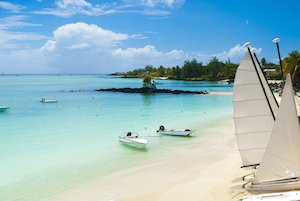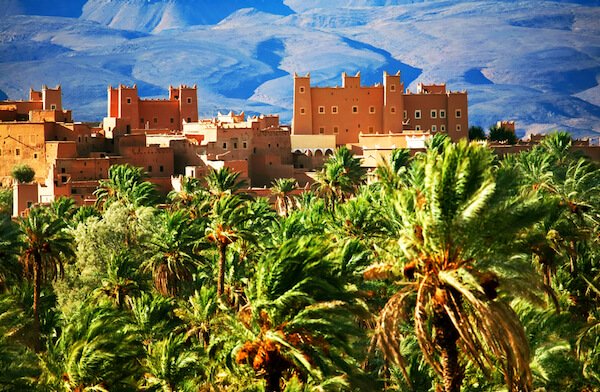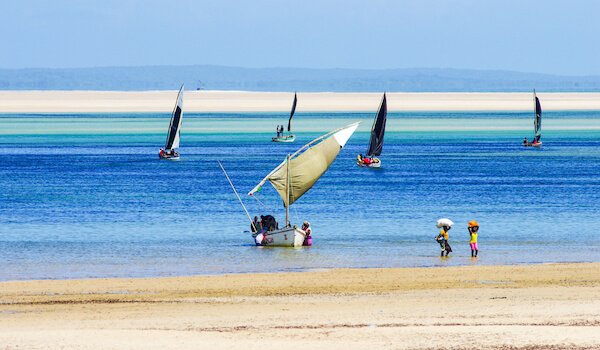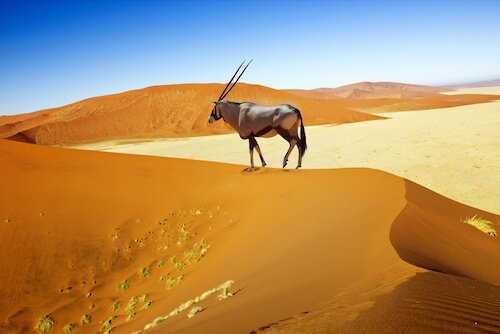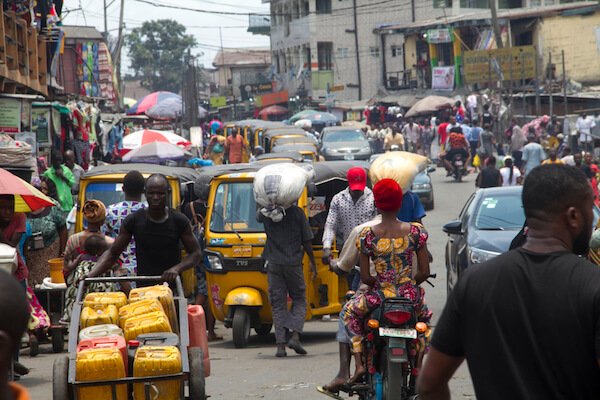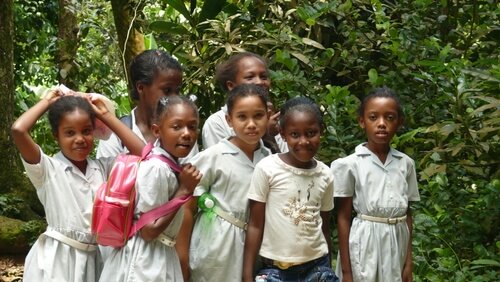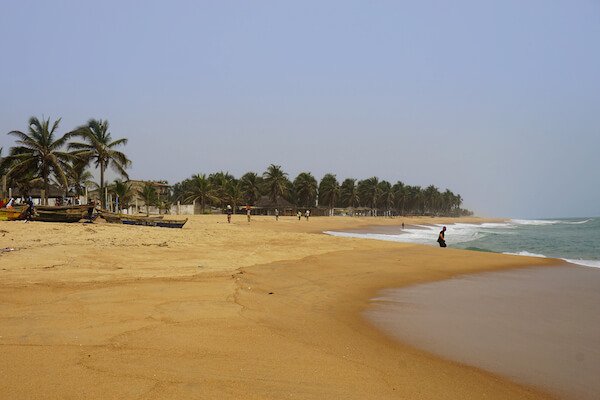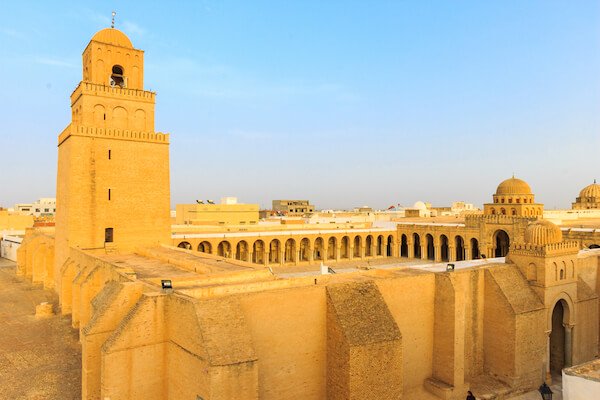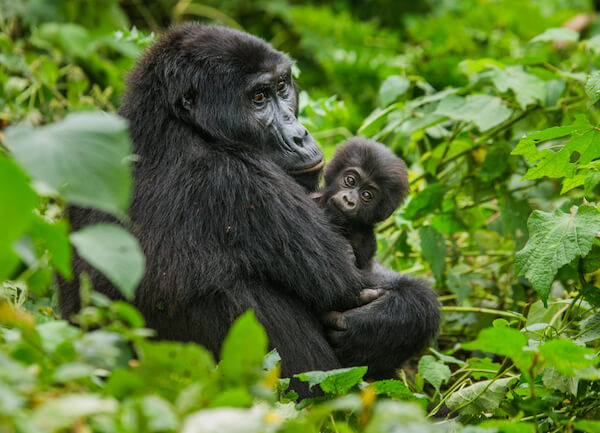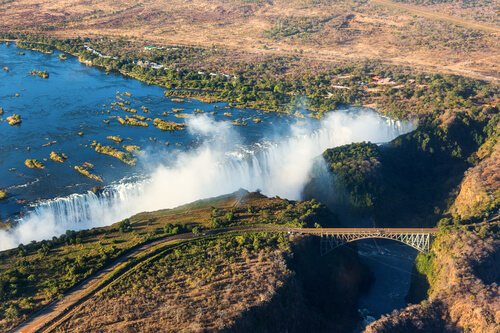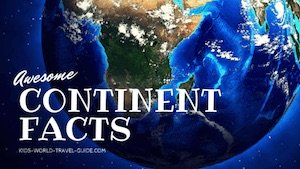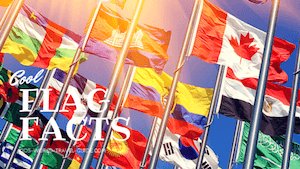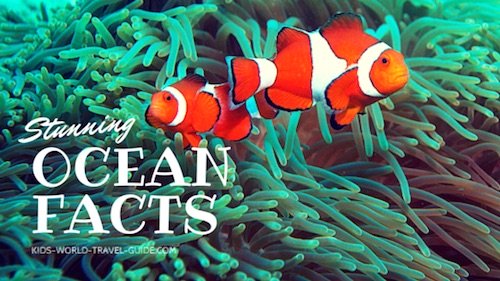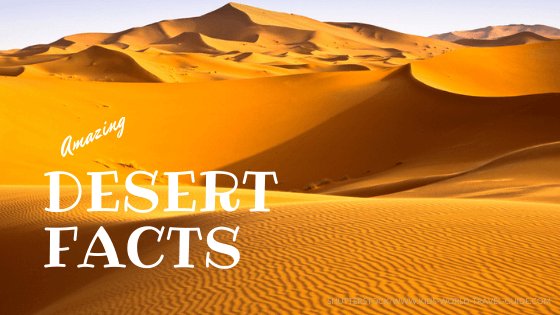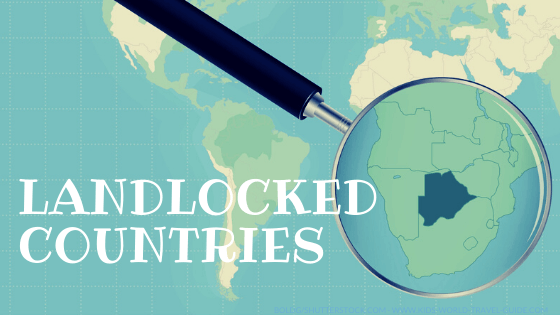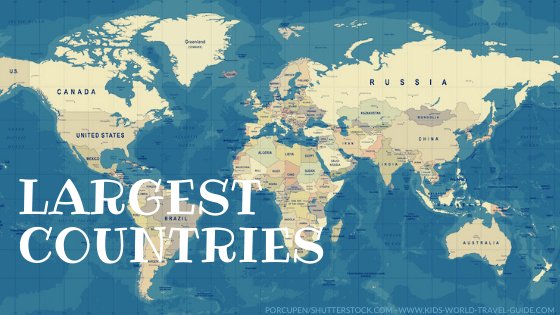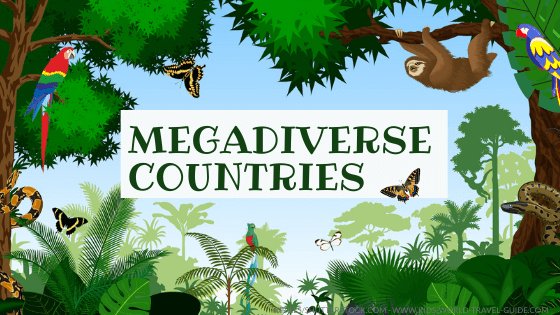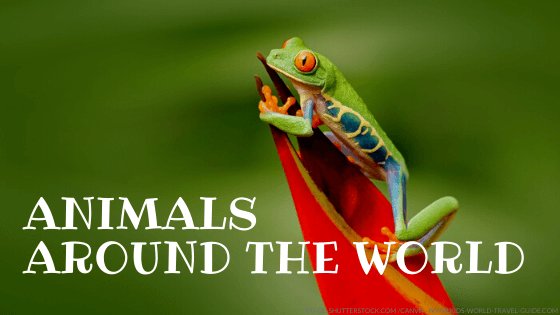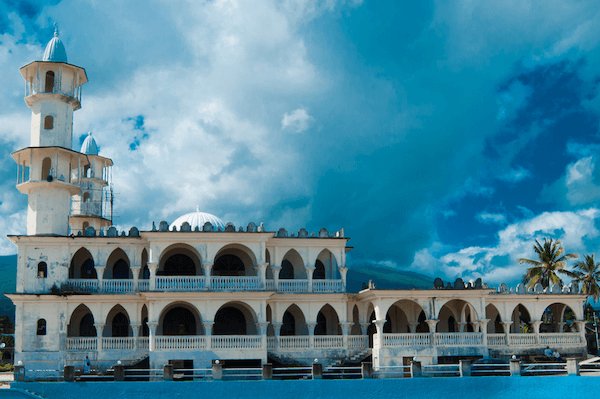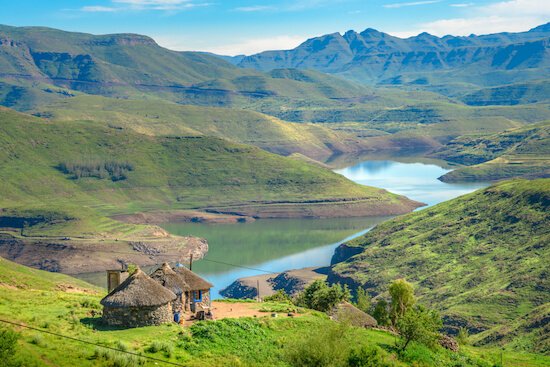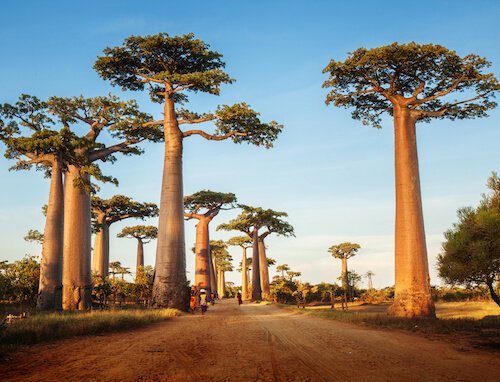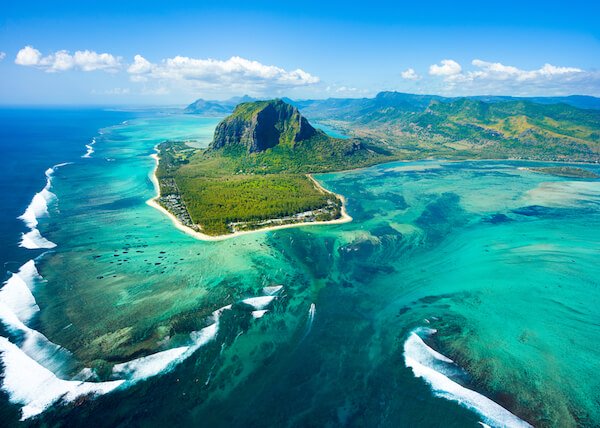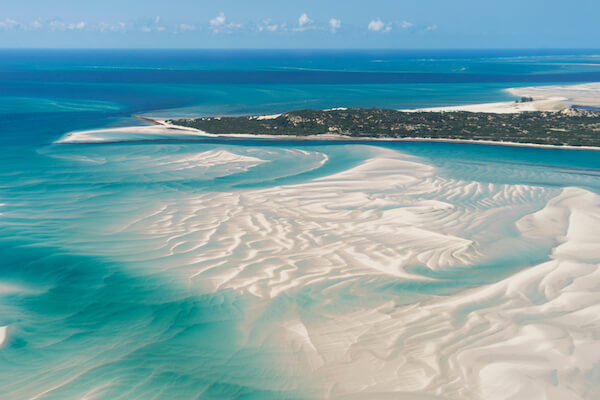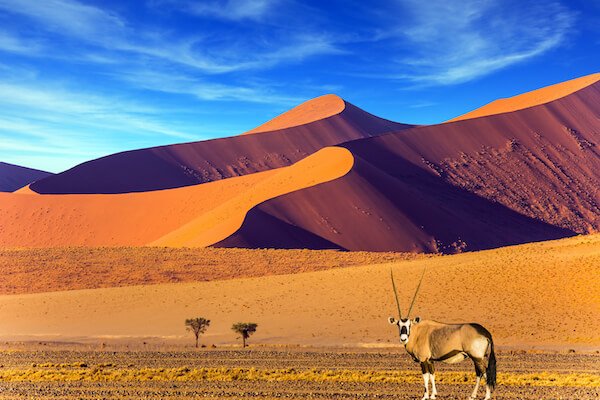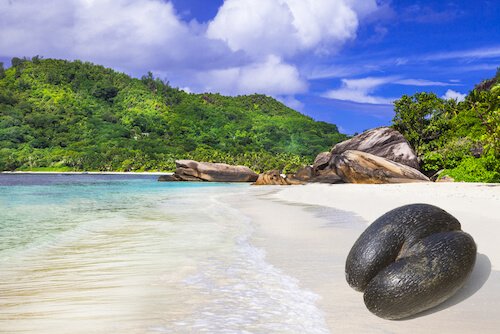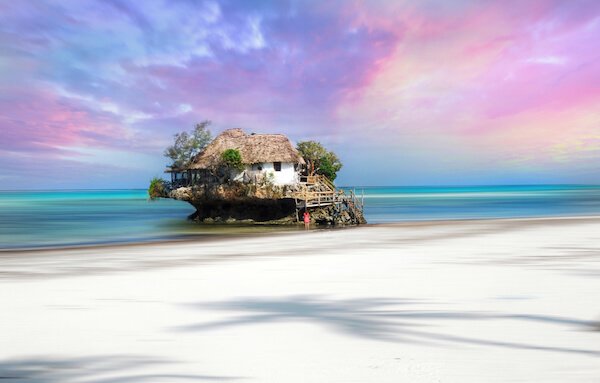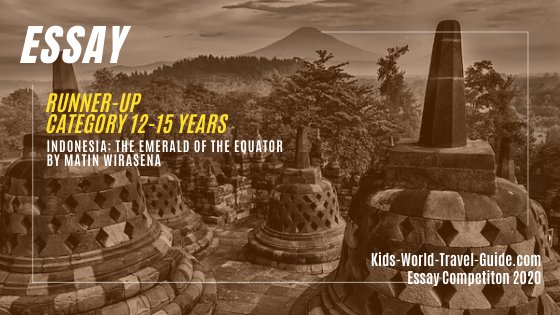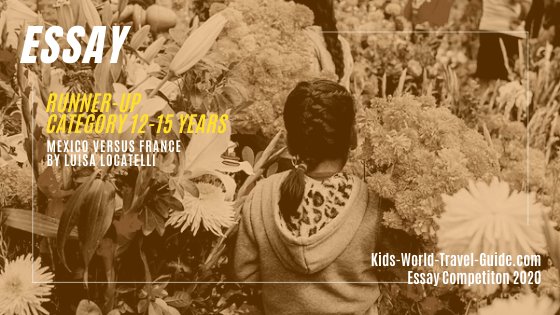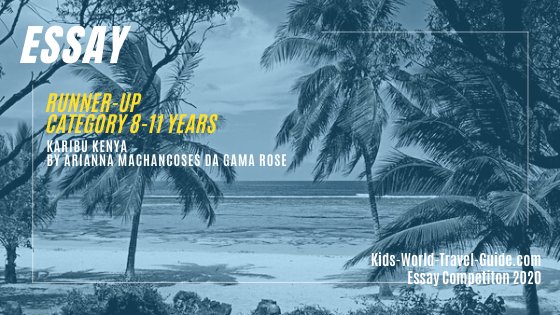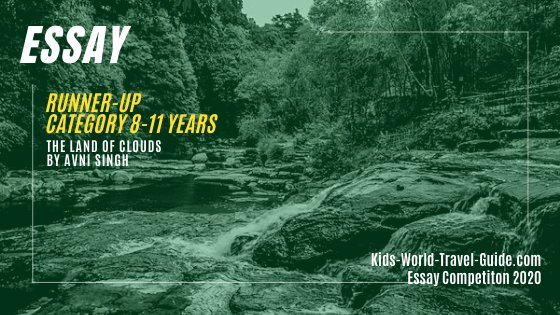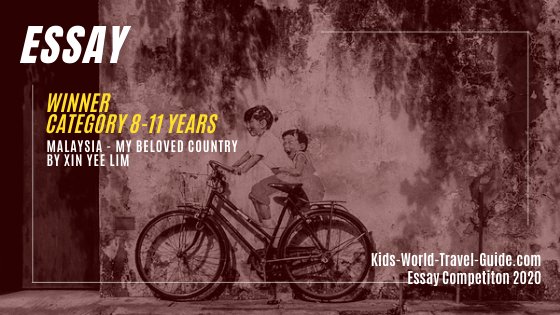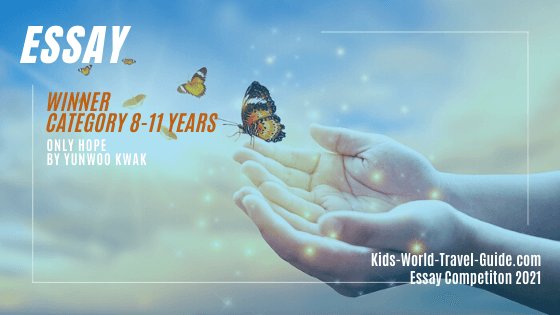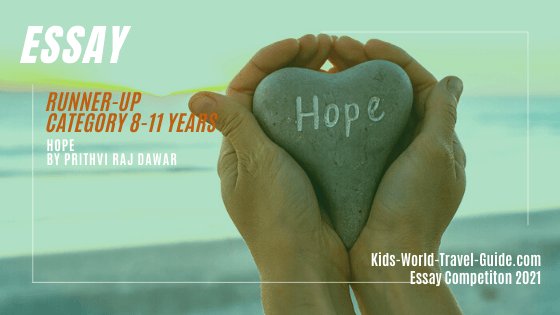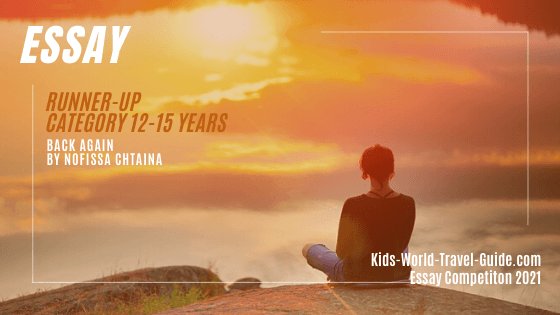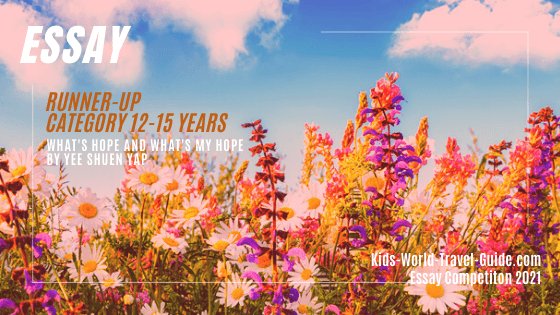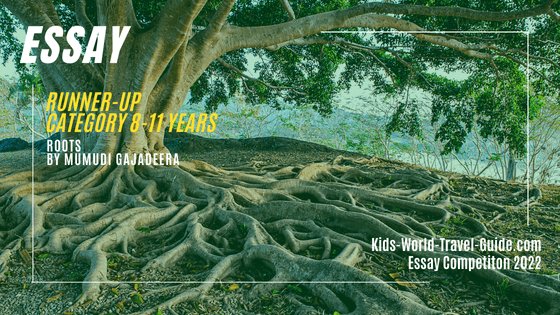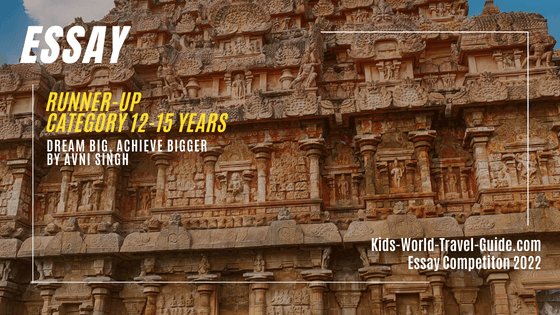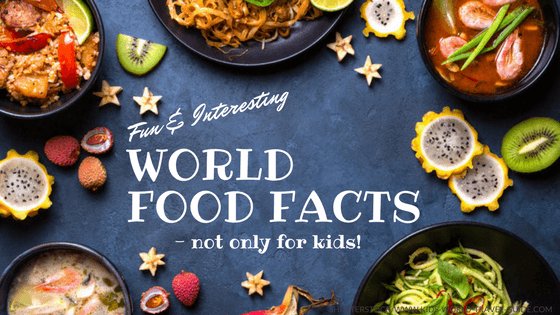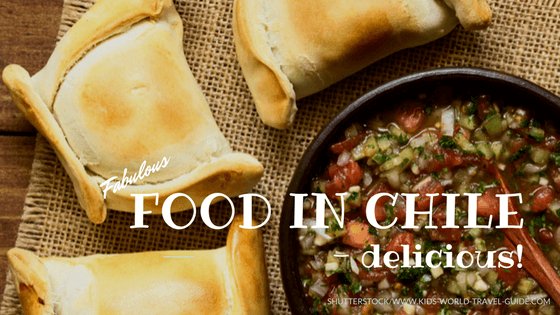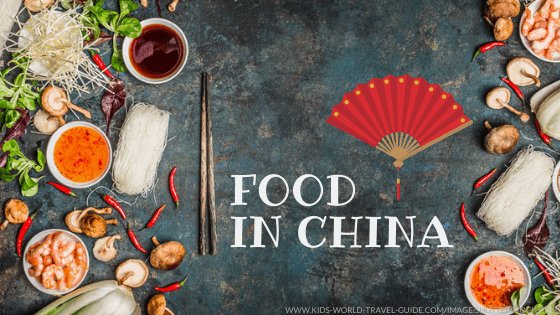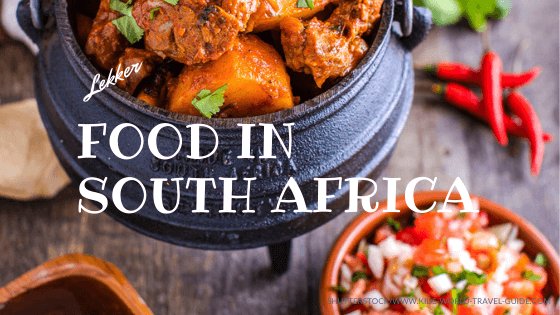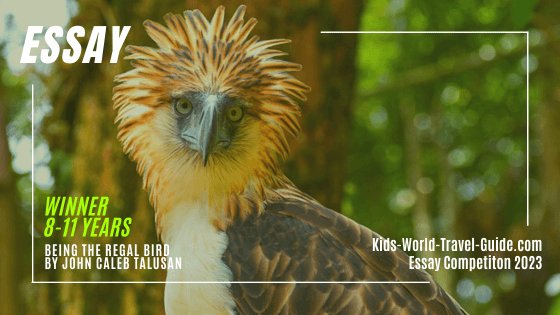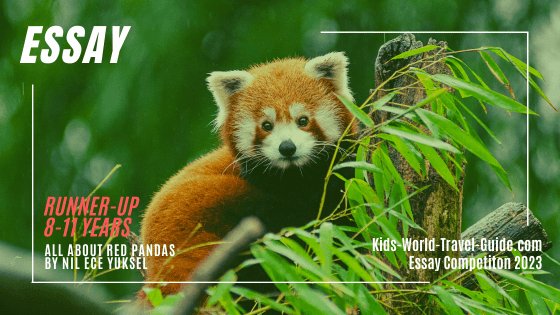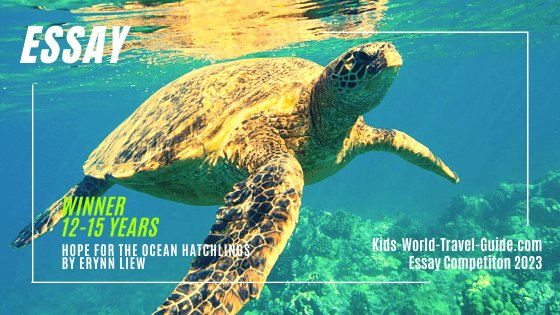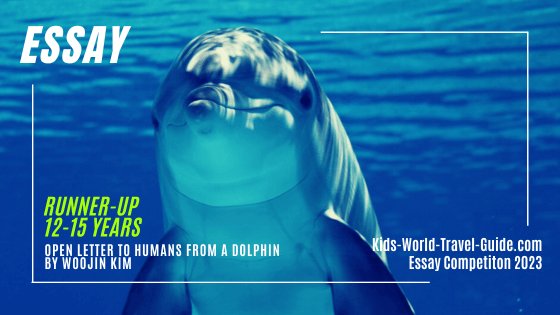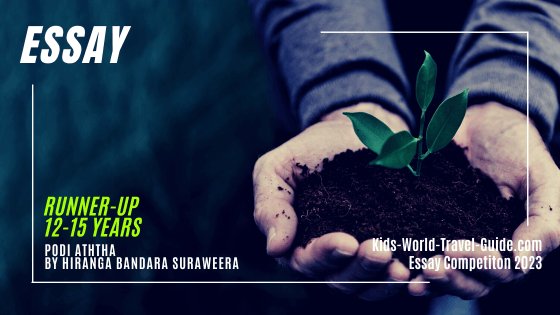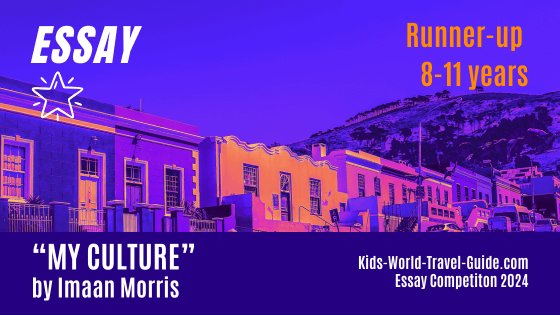Facts about Angola
Here are some interesting facts about Angola for kids which were chosen and researched by kids especially for kids.
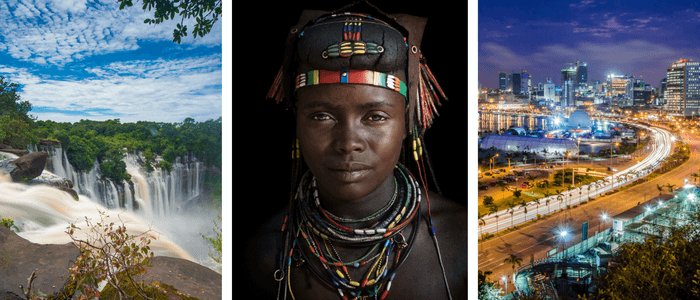 Facts about Angola: Epupa Falls, Muhacaona people, Luanda
Facts about Angola: Epupa Falls, Muhacaona people, LuandaAngola Facts for Kids
- Population: about 38 million people (2025)
- Capital city: Luanda with about 10 million people
- Name: Republic of Angola
- Nickname: "Land of Kings" referring to the traditional African kingdoms
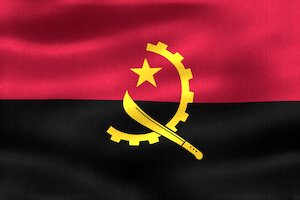 Angola Flag
Angola Flag- Government: presidential republic
- Languages: Portuguese (also the official language), Umbundu, Kikongo and Kimbundu
- Literacy: 71% of all over 15 years of age can read and write
- Religion: mainly Christians (80%) of these 41% are Roman Catholics
- Currency: 1 kwanza (KZR) = 100 lwei
- National Animal: lion
- National Colours: black, red, green and white
- National Day: 11 November (Independence Day)
- National Anthem: "Angola Avante" (Angola Forwards)
- Motto: virtus unitas fortior (Virtus is stronger when united)
- History: Angola was already settled about 25,000 BCE. San people lived in the region before other Bantu people moved into the area. Angola housed some of the largest African kingdoms and for many years the country was referred to as the Kongo Kingdom which was the largest kingdom in Sub-Saharan Africa. The Portuguese explored and colonised the region and founded the colony of Luanda in 1575. In 1914, the Portuguese abolished the Kongo kingdom and Angola became a colony of Portugal. Angola became independent from Portugal only in 1975. After independence a 27-year-long civil war raged in the country until 2002.
- President: João Lourenço (second term, head of government since 2017)
Facts about Angola | Angola Geography
Angola is a large country located in southwestern Africa and borders the Atlantic Ocean. The country lies south of the Equator.
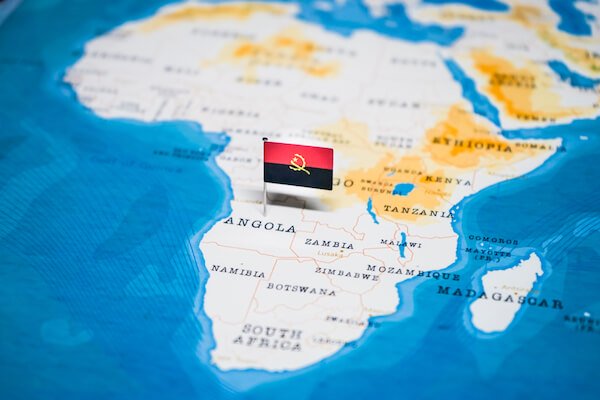
Angola borders four countries: The Republic of Congo in the Northeast with the exclave Cabinda, then to the North is the border with the Democratic Republic of Congo (DRC), Zambia is to the East and South and Namibia to the South. The South Atlantic Ocean lies to the West of the country.
Angola has an exclave called Cabinda within the Republic of Congo. The longest border is shared with the DRC over 867km/ 539 miles. Angola has an Atlantic Ocean coastline that is 1650 km/ 1,025 miles long.
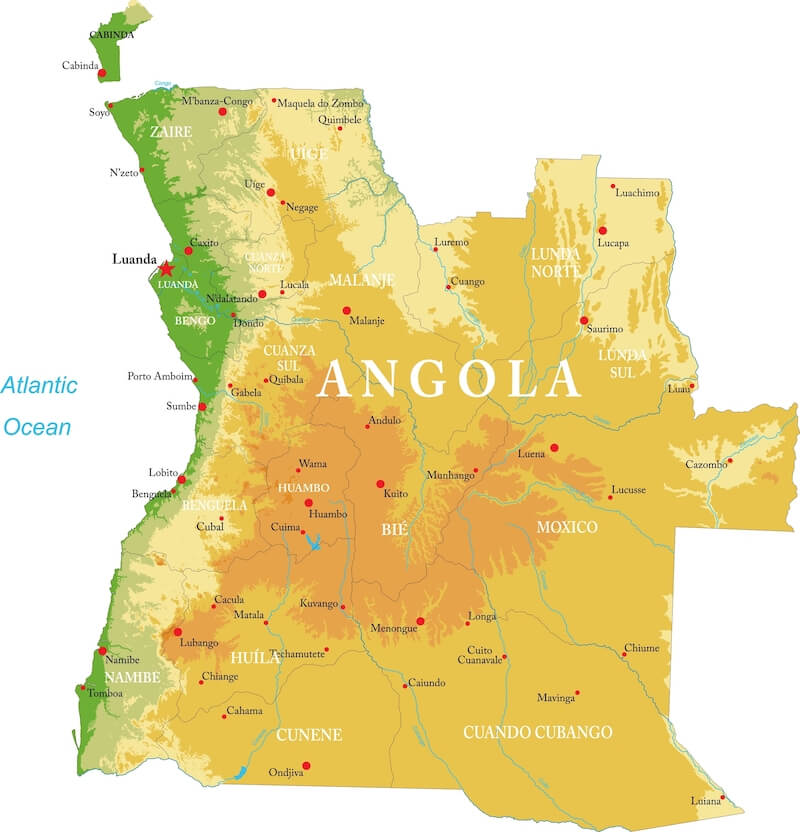 topographical map
topographical mapAngola is the seventh largest country on the African continent and the second largest country south of the Sahara - after the DRC - which is about double the size of Angola!
The country is slightly smaller than Peru and about double as the size of France. Angola is also slightly less than double the size of Texas/ USA.
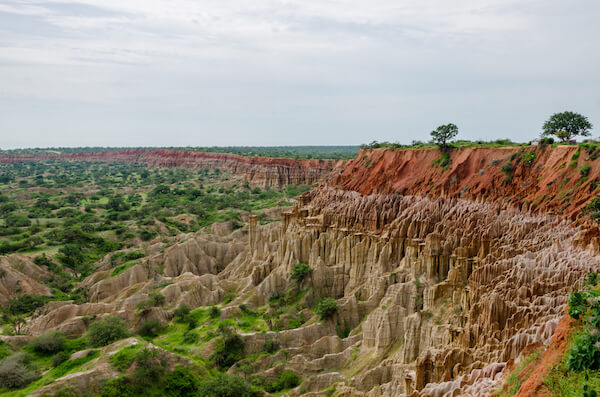 Miraduoro da Lua - Viewpoint of the Moon
Miraduoro da Lua - Viewpoint of the MoonAngola's name comes from the word 'ngola' of the local language which referred to the title of the local Ndongo king. The Ndongo kingdom was one of the largest kingdoms in the region.
The coastal lowlands with low cliffs made of red sandstone lead over rolling hills and mountains in the northern escarpment and steeper mountains in the South to high plains and the interior highlands. The high plateau dominates the Angolan topography. There is rainforest in the North and in the exclave Cabinda.
Facts about Angola
Geography Superlatives
- The longest river in Angola is the Kwanza River which is about 960 km/ 597 miles long. This is the only river of Angola that is navigable throughout the country.
- The largest city in Angola is the capital city Luanda. Luanda is also the oldest city in the country.
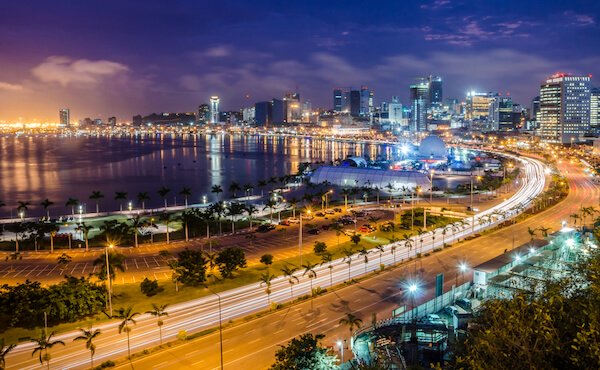 Luanda - capital city of Angola
Luanda - capital city of Angola- The largest lake in Angola is Lago Dilolo near Cameia National Park is a birder’s paradise.
- Angola's highest mountain is Mount Moca with 2,620 m/ 8,595 ft. The mountain is located in western Central Angola.
- The Kalandula waterfalls are the largest waterfalls in Angola.
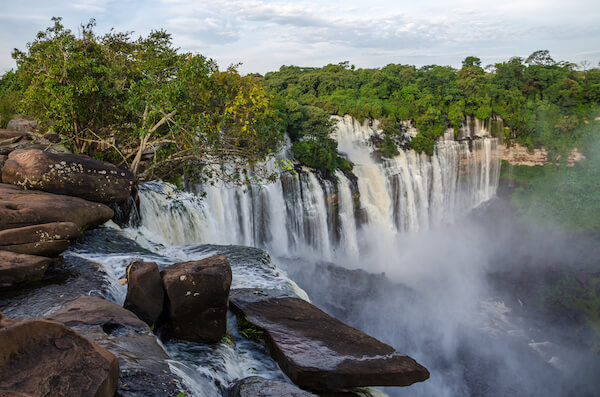 Kalandula waterfalls
Kalandula waterfalls- Iona National Park is the largest national park of Angola. The park is known for its unique rock formations as well its rich wildlife, which albeit much poaching has affected the biodiversity.
Facts about Angola | Climate
Angola has a tropical climate along the coast and a temperate climate on the plateau and highlands. The coldest months are July and August.
The Benguela current off the Angolan coast is a cool current thus the climate along the coast is mild and similar to the coastal climate in Peru or Mexico's Baja California.
Attractions in Angola
Facts about Angola
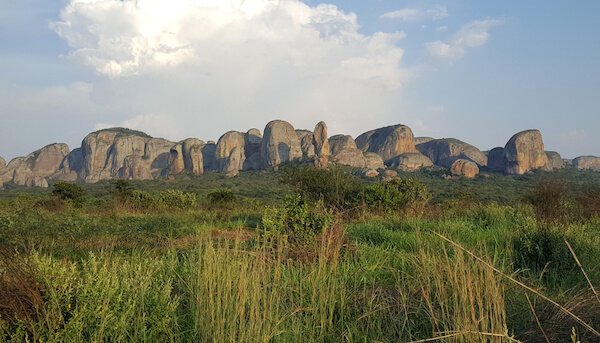 Black rocks - Pungo Adongo
Black rocks - Pungo Adongo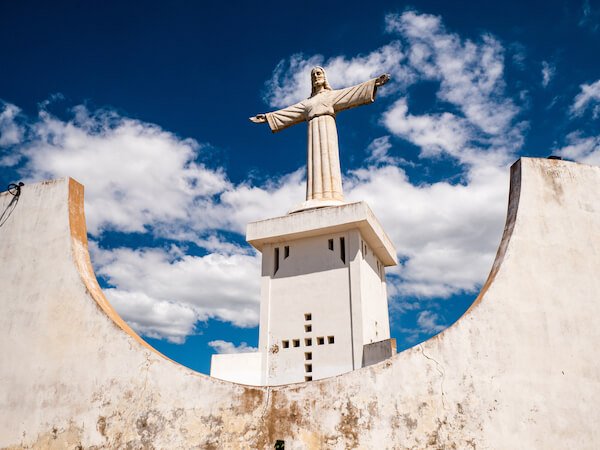 Christ the King Statue of Angola
Christ the King Statue of Angola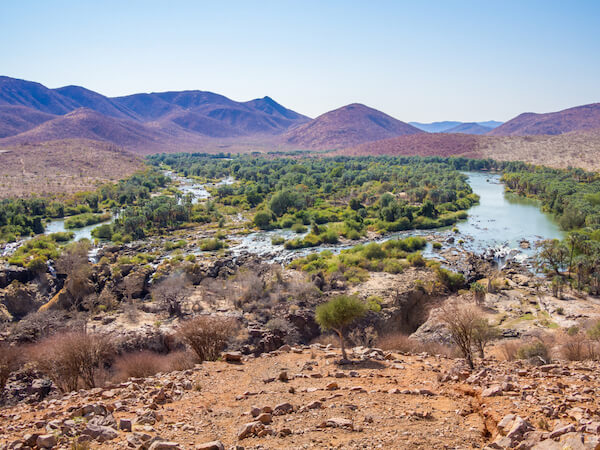 Cunene river landscape
Cunene river landscape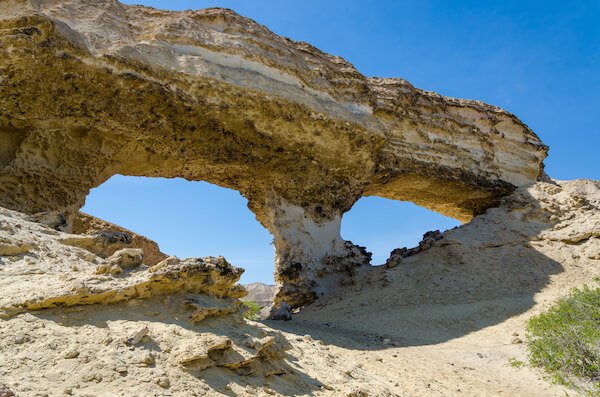 Lake Arco unique rock formations
Lake Arco unique rock formations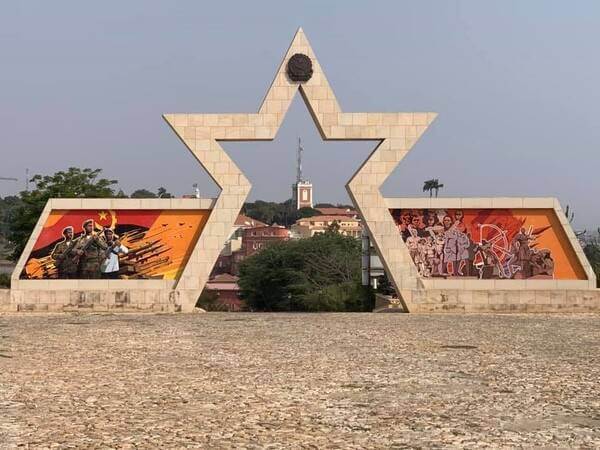 Fortaleza de São Miguel in Luanda
Fortaleza de São Miguel in Luanda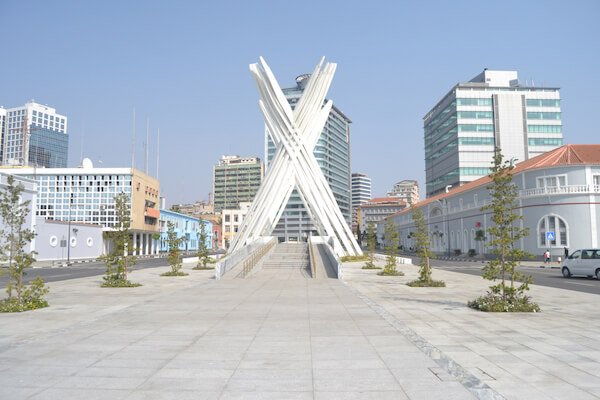 Luanda's Memorial of the Unknown Soldiers - image by ssacala
Luanda's Memorial of the Unknown Soldiers - image by ssacala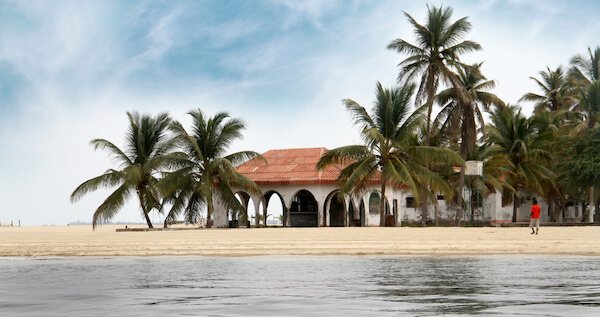 Beach on Mussulo island near Luanda
Beach on Mussulo island near Luanda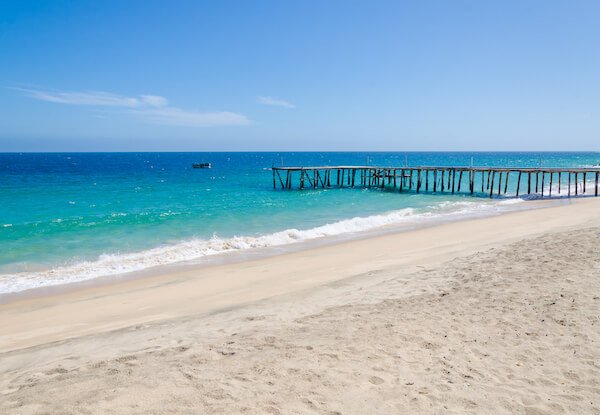 Atlantic beach in Angola
Atlantic beach in AngolaFacts about Angola for Kids Wildlife and Animals
The national animals is the Giant sable antelope. This is the largest of the antelope species and is only found in Angola.
The sable antelope sadly is a critically endangered species.
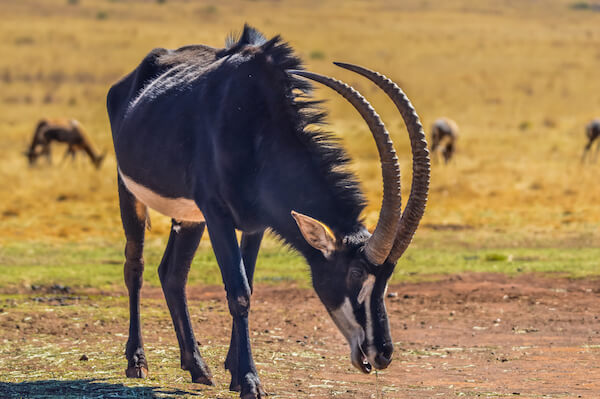
There is rich wildlife in Angola. Although the biodiversity has suffered due to the many years of war and illegal poaching, there are still almost 300 species of mammals and over 980 species of birds. Common birds are herons, flamingoes, ostriches and even albatrosses.
The Big Five animals, the lion, leopard, rhinoceros, buffalo and elephant all can be found in Angola.
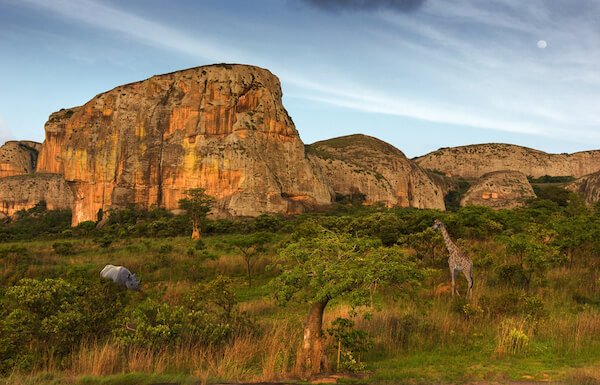 Wildlife in Angola
Wildlife in AngolaThe Angolan Colobus monkey, a black monkey with black face and white long hair around the face, and the Angolan genet, a cat-like mammal, both are rare sights but are species that only live in Southern Africa.
More Facts about Angola
Angolan People
Most Angolans live in the western part of the country, where there are also the largest urban centres. The biggest cities are Luanda, Lubango, Cabinda, Benguela and Malanje.
Angola is the second youngest country in Africa, with almost half its people being under 14 years old!
Angola has the second highest birth rate in the world and the third lowest average age of the population with not even 16 years! Compare this to Brazil where the average is 33 years, in the USA it is 38.5 years, in the UK it is 40.6 years and in Germany 47.8 years!
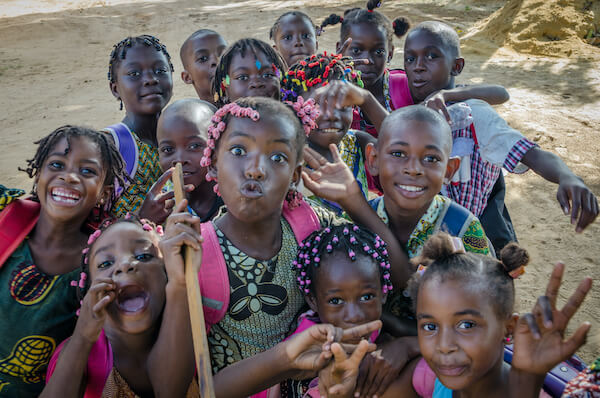 Children in Angola - image by Fabian Plock
Children in Angola - image by Fabian PlockThere are nine main Bantu tribes and some few San people in Angola. Most of the Angolan people belong to the Ovimbundu and Kimbundu ethnic groups, which include together about 62% of the population. The Bakongo people are the third largest ethnic group.
The Mucawana, also called Mucahaona people, are traditionally nomadic people that live in Southern Angola close to the Namibian border where they live with Himba people. They are known for their elaborate hairstyles and jewellery.
Angola has the second highest birth rate in the world - after Niger. Almost half of the population (48%) are children under 14 years of age.
After Niger and Uganda, Angola has the lowest average age of the population with not even 16 years! Compared to Brazil: 33 years, USA 38.5 years, UK 40.6 years, Germany 47.8 years!
There are about 100 ethnic groups in Angola, all with different languages and different customs.
Most of the Angolans are Christians (80%). The Cathedral of the Holy Saviour, called São Salvador, in M'banza Congo is considered the oldest colonial church in Southern Africa.
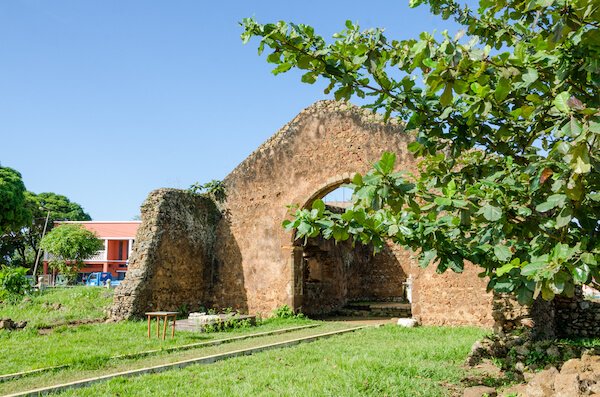 Church ruins in M'banza
Church ruins in M'banzaHowever, the church has been abandoned for many years. The church ruins from the 15th century are a UNESCO World Heritage Site.
Angola was once ruled by kingdoms. The 'land of the kings' is still home to several kings from the Ndongo kingdom, the Kongo kingdom, the Mbalundu, the Assante or the Mbunda kingdom.
Facts about Angola | Economy
Angola is the second strongest economy in Southern Africa - after South Africa.
Income from Oil and Gas account for more than half of the country's national income. Angola is Africa's strongest oil leader and among the world's most important oil and gas producers.
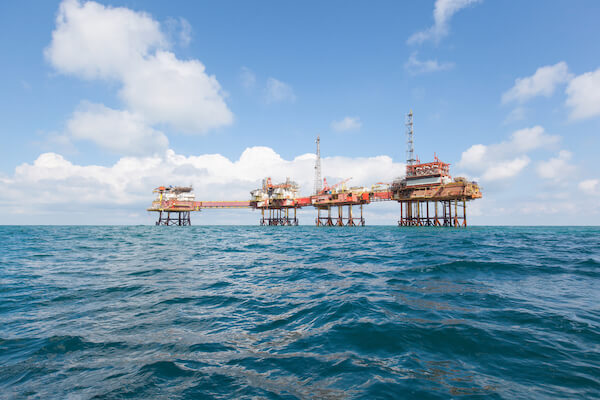 Angola oil platform off the coast
Angola oil platform off the coastCrude oil is Angola's biggest export product. Diamonds and iron ore are also important resources.
Although officially only 10% of all Angolans work in the agricultural sector, however subsistence farming is common in rural areas. Over 80% of the Angolan farms are small or medium sized.
The main agricultural produce are: cassava, rice, coffee, beans as well as bananas, citrus fruits, pineapples, mango and avocado.
The main trading partners of Angola are China, India and Portugal.
Facts about Angola | Food in Angola
Angolan staple foods include cassava, corn, millet, sorghum as well as beans, okra, vegetables and fruit.
Fresh fish and seafood is abundant in coastal regions of Kenya. The dishes on the eastern coastline are influenced mainly by Arabic and Indian cooking styles.
Moamba de galinha is commonly considered as the national dish of Angola.
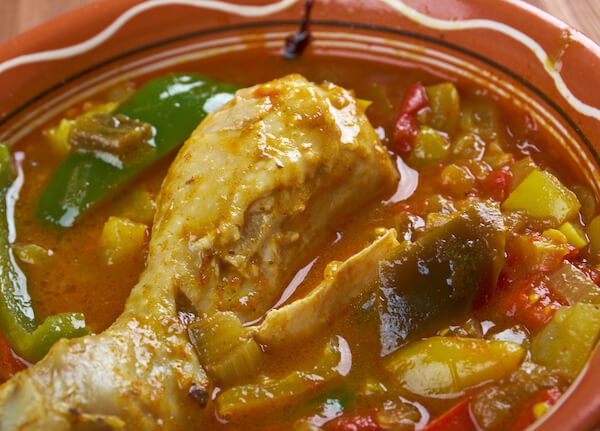 Moamba de galinha
Moamba de galinhaTypical food in Angola:
- Moamba de galinha: The traditional Angolan meal is a hearty stew made with chicken, palm oil and palm paste, okra, a variety of of vegetable and chilli peppers. This dish is mostly served with funge or rice.
- Funge: Traditional porridge made with cassava flour, millet or sorghum accompanies most meals
- Pirão: Savoury stew made with chicken or fish or both is a common meal in Angolan households.
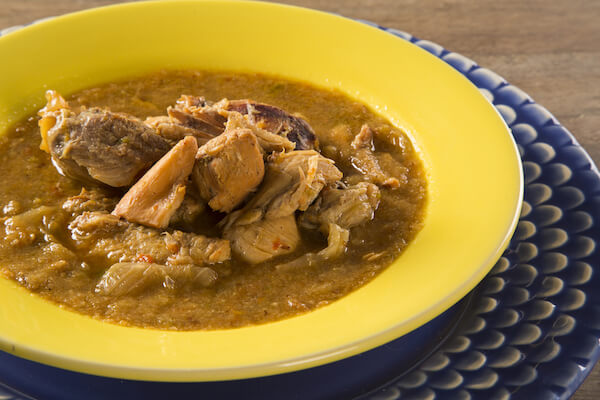
- Cocada amarela: sweet pudding made with shredded coconut, egg yolks and sugar - and very different to the Brazilian dessert with the same name
- Feijão com óleo de palma: beans and garlic cooked in palm oil is a common side dish
We hope you enjoyed our Facts about Angola. We will add more info about this stunning country soon. Now enjoy our other pages with facts about other African countries...
Popular Pages
Resources
Facts about Angola
- Central Intelligence Agency. "Angola". The World Factbook. Updated 25 March 2025. Last accessed 28 March 2025
- SAHO. "Angola." South African History Online. Last accessed 28 March 2025
- Welcome to Angola. "Provinces." TechAfrica. Last accessed 28 March 2025
- "Traditional Kings of Angola." The African Royal Families. Last accessed 28 March 2025
- Eric Lafforgue. "Angola Mucawana" Atlas of Humanity. Last accessed 28 March 2025
Go back from Facts about Angola to Kids-World-Travel-Guide Homepage
***
More Countries in Africa
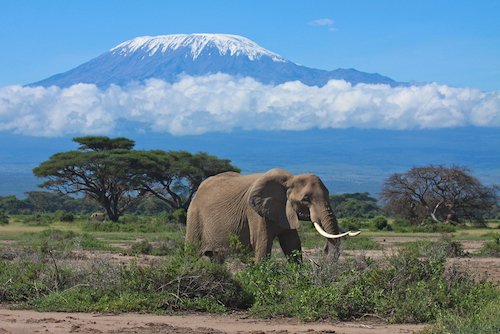 Tanzania
TanzaniaCountries in Southern Africa
 Angola
AngolaDid you like what you read?

|
Share this page with your friends! Simply use the html code below. Copy and paste onto your website, blog or Facebook page: <a href="https://www.kids-world-travel-guide.com/facts-about-angola.html">Kids World Travel Guide: Facts about Angola</a> |
